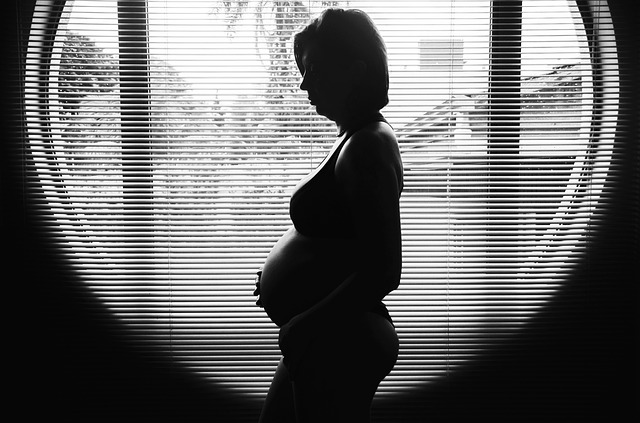
[ad_1]
Entitled “The Effects of Prenatal Cigarette and E-Cigarette Exposure on Infant Neurological Behavior: A Comparison with a Control Group,” the study explored how prenatal e-cigarette exposure compares to prenatal cigarette exposure, in terms of birth outcomes, neurodevelopmental, and behavioral abnormalities.
The researchers followed eighty-three infants, who were either exposed prenatally to cigarettes or e-cigarettes, or not exposed to either. Differences between these groups were assessed by observing measurable birth outcomes and Neonatal Behavior Assessment Scale (NBAS) scores at one month of age.
“Infants exposed to cigarettes and electronic cigarettes had a significantly higher number of abnormal reflexes. For autoregulation and motor maturity, infants exposed to cigarettes performed significantly worse with infants exposed to electronic cigarettes having decreased and slightly decreased motor maturity capacity for self-regulation. The birth outcomes, namely birth weight, gestation and head circumference, did not differ for infants exposed to e-cigarettes compared to infants who were not prenatally exposed to nicotine. Infants exposed to cigarettes had significantly lower birth weight and reduced head circumference compared to infants not exposed, ”the researchers reported.
Researchers should always take into account that most vapers are former smokers
“Dual use of cigarettes and e-cigarettes is quite common during pregnancy and it is possible that the harms observed are due to smoking in people in the e-cigarette group.”
However, some experts have spoken in response to these results, expressing some concerns about their reliability. Professor Jamie Brown, Professor of Behavioral and Health Sciences and Director of the Tobacco and Alcohol Research Group at UCL, pointed out that, since most vapers are previous smokers, the study should have looked at the smoking history of all vaping participants.
“It is well established that smoking during pregnancy increases the risk of various health problems. It is important to establish the risk of electronic cigarettes versus cigarettes during pregnancy. This requires studies to conduct a detailed assessment of these two behaviors during pregnancy. “
“We know that most e-cigarette users have smoked. It is not clear from this article how much the 10 parents who switched to e-cigarettes at 32 weeks had smoked before that time, or how much smoking during pregnancy may have been responsible for the results. Of note, twenty percent of people using e-cigarettes at 32 weeks in this study had relapsed to smoking at birth, ”explained Brown.
Professor Michael Ussher, professor of behavioral medicine at the University of London and the University of Stirling, expressed similar concerns and also pointed out a serious error in characterizing vaping as smoking.
“A major concern of this study is that the authors only assessed whether e-cigarette users had smoked cigarettes in the past few hours, rather than the past few days or weeks. Dual use of cigarettes and e-cigarettes is quite common during pregnancy and it is possible that the observed harms are due to smoking in people in the e-cigarette group. Also, it is incorrect to use the term “smoking electronic cigarettes” because there is no smoke in the vapor. The fact remains that smoking cigarettes is much more harmful than vaping, and vaping can help women quit smoking.
Vaping is not smoking
“.. it is incorrect to use the term” smoking electronic cigarettes “because there is no smoke in the vapor.”
Professor Linda Bauld, professor of public health at the University of Edinburgh, expressed concerns similar to those of her peers, while also pointing out some technical errors. “There are also questions to ask about the basic errors in the article. For demographic information, carbon monoxide (CO) readings are used to validate smoking status and the document states that this translates to the% CO in maternal blood. But testing for CO involves a breath test, not a blood test. ”
In line with Professor Michael Ussher’s arguments, Bauld added that the fact that vaping qualifies as smoking was a clear indicator that the document’s peer review process was not thorough. “In addition, the authors refer to the ‘electronic cigarette’ throughout the article. There is no smoke or tobacco in electronic cigarettes and these devices are not “smoked”. These two characteristics suggest that the authors are not familiar with the literature in this area and are issues that should have been addressed during the peer review.
A study with multiple errors
Professor John Britton, Emeritus Professor of Epidemiology, University of Nottingham, added more errors to the list. “This is a bad study for several reasons – it is not random; there is no power calculation; there are only 10 e-cig users and two of them started smoking again before the babies were tested; the article presents p-values instead of effect sizes; some of the results scores are clearly not distributed normally (the mean – 2SD is less than 0 in a score with a minimum of zero) but are treated as such; the level of Bonferroni’s correction for multiple comparisons is not explained (and there are multiple comparisons); and he compares 17 results, in three ways, with only 10 (or even really only 8) people in one of the groups.
“The authors suggest that their article raises the possibility that the use of nicotine during pregnancy may reduce reflex responses in newborns. While this remains a possibility, if their study suggests, it also clearly demonstrates that babies born to mothers who smoke are significantly harmed more than any possible harm from nicotine use. It therefore does not change the current advice for pregnant women who smoke, which is to stop all nicotine consumption if possible, but at the very least to stop smoking tobacco.
American study: the risks of alcohol and nicotine consumption during pregnancy
Source link